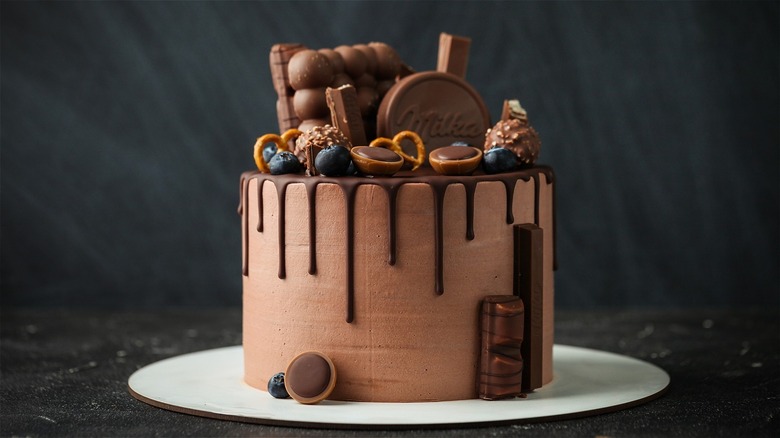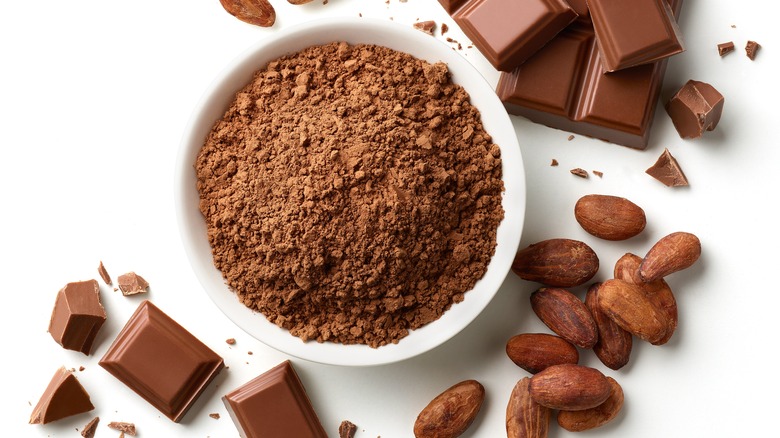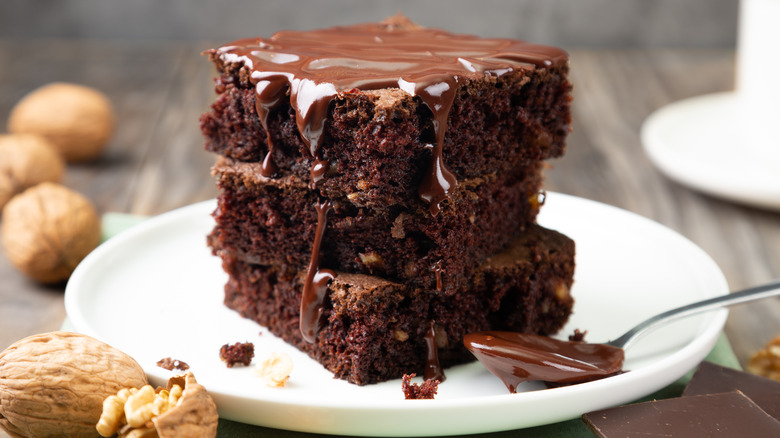The Real Difference Between Baking Chocolate And Regular Chocolate
Have you ever been in a situation where you're standing in the middle of a grocery store aisle, staring at a bunch of different chocolate, unsure of what kind the recipe called for? You certainly aren't alone — it's important to have some knowledge of different chocolates if you intend on baking that decadent chocolate cake or a sweet ganache.
It's the age-old questions that have haunted us and our domestic urge to bake for years on end — what is the best chocolate for baking, and is there an actual difference between all of the chocolates? Furthermore, if we use one rather than the other, will this cause a drastic difference in the final product? The answer to all of those questions is yes. Knowing what specific chocolate to use for your baked goods is an important trick to making the best final product (via The Confectionery Foundation). Luckily, we are here to tell you the real difference between baking chocolate and regular chocolate, as well as when to use them.
The real difference between the two
There is a drastic difference between baking and regular chocolate, especially when it comes to baking a cake. Baking chocolate is pure cacao, meaning no sweetener or flavor is added to the bar, making it very bitter. Many recipes that call for sugar, as well as chocolate, often call for baking chocolate. Because the cacao is so bitter, the added sugar in the recipe helps tone down some of that tartness while keeping the chocolate flavor. Then, you can control how sweet the final product is instead of risking it all by combining regular chocolate and sugar (via Hotel Chocolat).
Regular chocolate bars contain many other ingredients in addition to cacao. Dark chocolate and milk chocolate bars contain more than just cacao, making them enjoyable to eat, but not 100% like baking chocolate. Milk chocolate, for instance, is only required to have 10% cacao, according to U.S. law. The addition of ingredients, such as sugar, makes the end result sweeter than a baking chocolate bar.
When to use each one
Now the question is, when should you use each chocolate? A good rule of thumb is to know how sweet your baked goods should be and go from there. If a recipe only has a couple of ingredients, like one for ganache, it's safe to say using baking chocolate is the wrong one to use (via Southern Living). However, if you're baking up something chocolatey and rich, sugar and baking chocolate will probably be in the recipe to bring out the rich chocolate flavor. This comes from the 100% cacao, and a touch of sweetness is derived from the added sugar.
Take some of these recipes as examples of when to use each chocolate. Fudgey, gooey chocolate brownies will include baking chocolate, brown sugar, and cacao powder. Something like a chocolate-covered cheesecake bite or a chocolate cream pie calls for semi-sweet chocolate or dark chocolate — these chocolates typically have less than 100% cacao, as the chocolate is supposed to be more sweet than rich.


